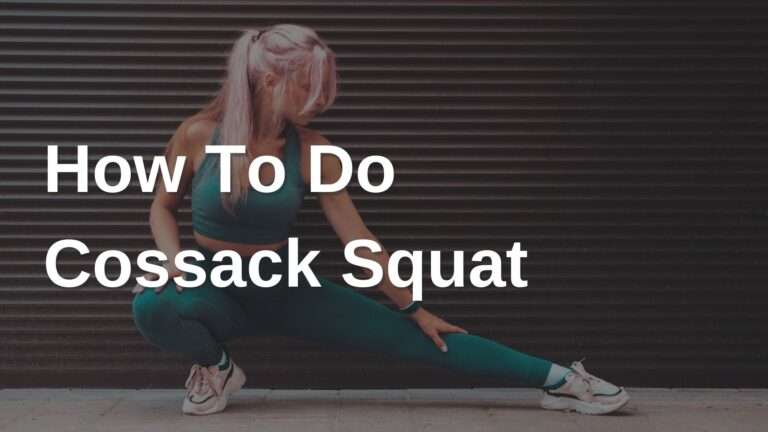A Step-by-Step L sit Progression For Beginners

Have you ever wondered how gymnasts and calisthenics enthusiasts manage to hold themselves in a seemingly impossible “L” shape? That’s the L-sit, a challenging but rewarding exercise that can greatly enhance your core strength and balance. In this guide, we’ll take you through the step-by-step process of mastering the L-sit through a series of progressive exercises. Whether you’re a fitness enthusiast or just starting your journey, the L-sit progression can be tailored to your level.
What is L sit?
The L-Sit is a bodyweight exercise that involves lifting your body off the ground while keeping your legs straight in an “L” shape. The L-sit is a fantastic exercise that targets your abdominal muscles (abs), hip flexors, and overall core strength. It might seem tough at first, but with patience and consistent practice, you can conquer it. Let’s dive into the progression exercises that will help you build up to the full L-sit hold.
Muscles Worked In Performing This Workout
- Core Muscles: Your abdominals and obliques take centre stage, working overtime to keep your body in that challenging L-shape.
- Hip Flexors: These bad boys at the front of your hips pull double duty, helping you lift those legs and maintain that impressive hold.
- Shoulders: Your shoulders play a vital role in stabilizing your upper body as you press down to keep yourself suspended.
- Triceps: These muscles on the back of your upper arms are like your secret weapon, helping you maintain that perfect arm position while you hold the L-Sit.
How to Do the L-Sit Hold: A Step-by-Step Guide
Step 1: Find a Stable Surface
Start by sitting on the ground with your legs stretched out in front of you. Place your hands on the ground beside your hips, fingers pointing forward. You can also use parallel bars or sturdy handles if available.
Step 2: Lift Your Body
Press through your hands and lift your hips off the ground. Keep your legs straight and your toes pointed. Your body should resemble an “L” shape, with your legs parallel to the ground.
Step 3: Engage Your Core
This is where the magic happens! Tighten your core muscles by pulling your belly button towards your spine. This helps you maintain balance and stability in the L-Sit position.
Step 4: Hold and Breathe
Try to hold the position for as long as you can. At first, a few seconds might be a challenge, but don’t worry – progress takes time. Remember to breathe steadily while you’re holding the L-Sit.
Step 5: Lower Down
Gently lower your body back down to the starting position and relax. You did it! Now you can build up your strength and stamina over time.
Also read: How to do pistol squats
L sit Progression From Beginner To Pro
Let’s dive into the progression exercises that will help you build up to the full L-sit hold.
1. Leg Raises
To start leg raises, find a comfortable spot on the floor. Lie down and ensure your legs are straight. Position your hands beside your body for support. Now, gently lift both legs off the ground while keeping them straight – remember, no bending at the knees. This simple yet effective exercise is a top-notch way to enhance your core strength, all without the need for any equipment.
Aim for 3 sets of 15 reps.
2. Hanging Knee Raises
Once leg raises become comfortable, move on to hanging knee raises. To perform hanging knee raises, find a sturdy horizontal bar to hang from. Hang with your arms fully extended. Bend your knees and bring them towards your chest, lifting them as high as you comfortably can. Slowly lower your knees back down to the starting position. This exercise not only helps you work on your core muscles but also challenges your balance and coordination.
Aim for 3 sets of 15 reps.
Also read: How to do Back lever
3. Hanging Leg Raises
Moving on, hanging leg raises take the exercise up a notch. Find a sturdy horizontal bar to hang from. Start by hanging with your arms extended. Gradually lift your legs up while keeping them straight. Lower them down in a controlled manner. This exercise not only works your core but also strengthens your grip.
Aim for 3 sets of 12-15 reps.
4. Leg Raise Hold
Now, let’s introduce holds. You are targeting your hip flexors with this isometric exercise. With the leg raise hold, perform hanging leg raises as before, but this time, hold your legs parallel to the ground for a few seconds before lowering them. You can do this exercise on the floor or as hanging. This teaches your muscles to sustain tension, a crucial skill for the L-sit.
Aim for 3 sets of 30 seconds hold.
5. Tucked L-Sit Hold
As you progress, move on to the tucked L-sit hold. Sit on the ground with your hands beside your hips and your legs bent towards your chest. Lift your hips off the ground, trying to keep your legs tucked in. Aim to hold this position for a few seconds. This exercise brings you closer to the full L-sit position.
Aim for 20 seconds hold.
6. One Leg L-Sit Hold
Now, we’re inching even closer to the full L-sit. Sit on the ground and extend one leg forward while keeping the other leg tucked. Place your hands beside your hips and lift your body off the ground. This asymmetrical position challenges your balance and strengthens your core further.
Aim for 15 seconds hold each leg.
7. Full L-Sit Hold
Congratulations, you’re almost there! For the full L-sit hold, sit on the ground with your hands by your hips. Extend your legs forward, keeping them parallel to the ground. Lift your body up, aiming to hold the L-shape for as long as possible. Remember to engage your core muscles and breathe steadily.
Mobility Exercise For Learning the L sit Hold
Now let’s discuss flexibility and mobility, which are not very obvious factors in mastering the L-Sit hold. Actually, this ability requires some flexibility to pull off the picture-perfect form. You’re in luck since our flexibility exercises will make mastering the L-Sit much easier for you.
Hamstring Stretch: Grab a seat and extend both those legs in front of you. Now, here’s the fun part – lean your upper body forward, aiming to touch those elusive toes. Feel that stretch? Hold on to that feeling, my friend.
Downward-Facing Dog: Time to channel your inner yogi. Plant those hands right under your shoulders and your knees under your butt. Ready? Straighten those legs, lift those hips, and voila – you’ve just created a human “V” upside-down style. And hey, keep those heels grounded for the ultimate stretch. Hold steady in this pose.
Quad Stretch: Alright, time to stand up. Find a trusty wall and lean against it. Now, focus on one leg at a time. Bend your left leg, grab that ankle, and bring your calf up close to your thigh. Feel the sweet stretch in your quad? Hang out in this position for a moment and then switch sides. Your quads will thank you.
Training Tips and Techniques
To make consistent progress, consider these training tips:
- Frequency and Volume: Dedicate specific training sessions to L-Sit work, aiming for 2-3 times a week.
- Progressive Overload: Gradually increase hold times and the complexity of your L-Sit variations.
- Dynamic Variations: Spice things up with exercises like L-Sit to L-Sit pull-ups, showcasing your newfound core strength.
- Flexibility Exercises: Incorporate stretches to improve your hip and hamstring flexibility, enhancing your L-Sit performance.
Overcoming Challenges and Staying Safe
Feeling stuck in your progression? Even most of us experience it. Give your body enough time to rest, and don’t be afraid to change your workout routine. Consult a fitness expert if you feel any pain or discomfort to be sure you’re doing the L-Sit safely.
Conclusion
As you wrap up your journey through L-Sit progression, take pride in the strides you’ve made. The L-Sit isn’t just about mastering a challenging exercise – it’s about cultivating a rock-solid core that supports you in every aspect of life. So, keep practising, stay patient, and soon enough, you’ll be showcasing your L-Sit prowess like a true fitness pro. Remember, it’s not just about the hold; it’s about the journey that leads to your own personal victory over the L-Sit!
FAQs
Is the L-Sit suitable for beginners?
Absolutely! While the L-Sit might seem advanced, there are progressive steps that make it accessible for beginners. Starting with tuck sits and one-legged variations will help you gradually build the necessary strength and technique.
How long does it take to master the Full L-Sit?
Usually 2 to 3 months, but the timeline varies from person to person. It’s important to be patient and consistent in your practice. Some may achieve the Full L-Sit within a few months, while others might take longer. Stay committed and celebrate your progress along the way.
What muscles are primarily engaged during the L-Sit?
The L-Sit primarily targets the core muscles, including the abdominals and obliques. It also engages the hip flexors, shoulders, and triceps to maintain the lifted position.
How often should I practice L-Sit progressions?
Consistency is key, but it’s important to allow sufficient recovery time. Aim for 2-3 training sessions per week, ensuring you target various aspects of your core strength and mobility.
Can I perform L-Sit progressions even without a gym or equipment?
Absolutely! L-Sit progressions require minimal equipment. You can practice at home or even at a local park using parallel bars, parallettes, or stable elevated surfaces like sturdy chairs or steps.
How can I prevent injury while practising L-Sit progressions?
Prioritize proper form and technique. Gradually increase intensity and duration to avoid overexertion. Incorporating flexibility exercises and paying attention to your body’s signals will also contribute to injury prevention.
Can L-Sit progressions benefit my overall fitness routine?
Definitely! Mastering the L-Sit can enhance your core strength, stability, and control, which will complement various exercises and sports. Additionally, the increased body awareness and control gained from L-Sit training can carry over to other movements.






